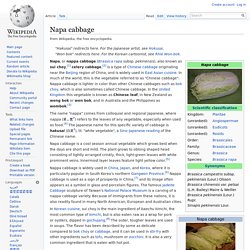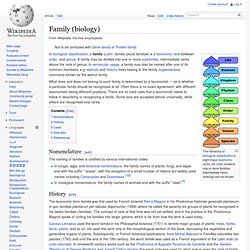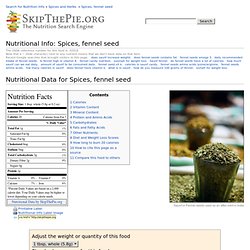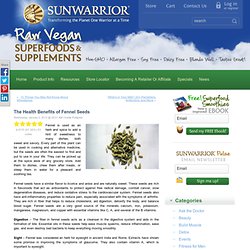

Dry Beans. Beans, Rice, Seasonings, Cooking Oils - Goya Products. Mulberry Lane Farm. BOBS RED MILL: Organic White Wheat Farina, 25 lb - Yetee Marketplace. Cheese. Bob's Red Mill.
Udon and rice noodles. Recipes. Groceries. Weight loss. Food research. Alcohol. Tobacco. Shiitake. The shiitake (/ʃɪˈtɑːkeɪ, ˌʃiːɪ-, -ki/;[1] Japanese: [ɕiꜜːtake] ( listen) Lentinula edodes) is an edible mushroom native to East Asia, which is cultivated and consumed in many Asian countries.

It is considered a medicinal mushroom in some forms of traditional medicine.[2][3][4][5] Taxonomy and naming[edit] Agaricus edodes Berk. (1878)Armillaria edodes (Berk.) Sacc. (1887)Mastoleucomychelloes edodes (Berk.) The mushroom's Japanese name shiitake (椎茸) is composed of shii (椎, shī, Castanopsis), for the tree Castanopsis cuspidata that provides the dead logs on which it is typically cultivated, and take (茸, "mushroom").[9] The specific epithet edodes is the Latin word for "edible".[10] It is also commonly called "sawtooth oak mushroom", "black forest mushroom", "black mushroom", "golden oak mushroom", or "oakwood mushroom".[11] Habitat and distribution[edit] Cultivation history[edit] Culinary[edit] Nutrition[edit] Uses[edit] Fresh and dried shiitake have many uses in the cuisines of East Asia.
Books. Whole Foods UK. Napa cabbage. "Hakusai" redirects here.

For the Japanese artist, see Hokusai. "Won bok" redirects here. For the Korean cartoonist, see Rhie Won-bok. Napa, or nappa cabbage (Brassica rapa subsp. pekinensis), also known as sui choy,[1] celery cabbage,[2] is a type of Chinese cabbage originating near the Beijing region of China, and is widely used in East Asian cuisine. In much of the world, this is the vegetable referred to as "Chinese cabbage". The name "nappa" comes from colloquial and regional Japanese, where nappa (菜っ葉?) Napa cabbage is a cool season annual vegetable which grows best when the days are short and mild. How to Steam Flour Tortillas.
Family (biology) What does and does not belong to each family is determined by a taxonomist — as is whether a particular family should be recognized at all.

Often there is no exact agreement, with different taxonomists taking different positions. There are no hard rules that a taxonomist needs to follow in describing or recognizing a family. Some taxa are accepted almost universally, while others are recognised only rarely. The naming of families is codified by various international codes. In fungal, algal, and botanical nomenclature, the family names of plants, fungi, and algae end with the suffix "-aceae", with the exception of a small number of historic but widely used names including Compositae and Gramineae.[1][2]In zoological nomenclature, the family names of animals end with the suffix "-idae".[3] Amazon. Bulk Wholesale Supplier of candles. Old grocery list. Market of Choice. Foods. Nutritional Info: Spices, fennel seed. Fats and Fatty Acids The chart below shows good fats in Spices, fennel seed in relation to bad fats.

Read more about each type of fat and fatty acid below. Polyunsaturated Fats: Polyunsaturated fat can be found mostly in nuts, seeds, fish, algae, leafy greens, and krill. Whole food sources are always best, as processing and heating may damage polyunsaturated fats. Monounsaturated Fats: Foods containing monounsaturated fats reduce LDL (bad) cholesterol, while possibly increasing HDL (good) cholesterol. Trans Fatty Acids: The National Academy of Sciences has concluded there is no safe level of trans fat consumption.
Saturated Fats: Consumption of saturated fat is a risk factor for cardiovascular disease in the view of the Canadian Heart and Stroke Foundation, the American Heart Association, the British Heart Foundation, the National Heart Foundation of Australia, the National Heart Foundation of New Zealand and the World Heart Federation. Alternative health products. Fennel Seeds - Sunwarrior News. The Health Benefits of Fennel Seeds 4.87/5 (97.36%) 53 votes Fennel is used as an herb and spice to add a hint of sweetness to many dishes, both sweet and savory.

Every part of this plant can be used in cooking and alternative medicine, but the seeds are often the easiest to find and put to use in your life. They can be picked up at the spice aisle of any grocery store. Add them to dishes, chew them after meals, or steep them in water for a pleasant and soothing tea. Fennel seeds have a similar flavor to licorice and anise and are naturally sweet. Digestion – The fiber in fennel seeds acts as a cleanser in the digestive system and aids in the formation of bile. Sight – Fennel was considered an herb for eyesight in ancient India and Rome.
Brain – Fennel has beneficial effects on memory and cognitive function. PMS – Fennel seeds are anti-spasmodic and help reduce pain, cramping, bloating, and gas. Breast Feeding – Fennel promotes the production and secretion of milk. About Charlie Pulsipher. Calories burned in 30 minutes of leisure and routine activities.